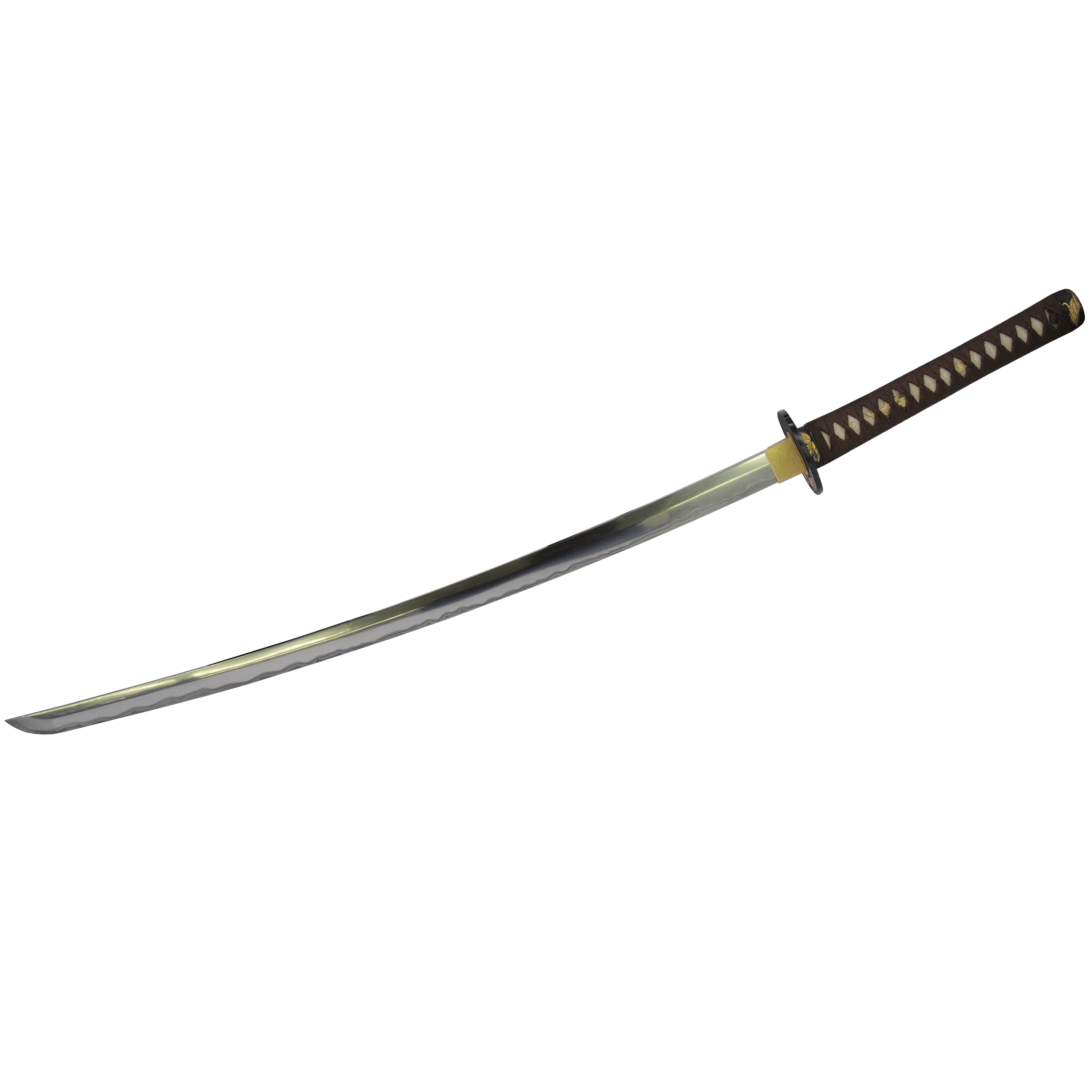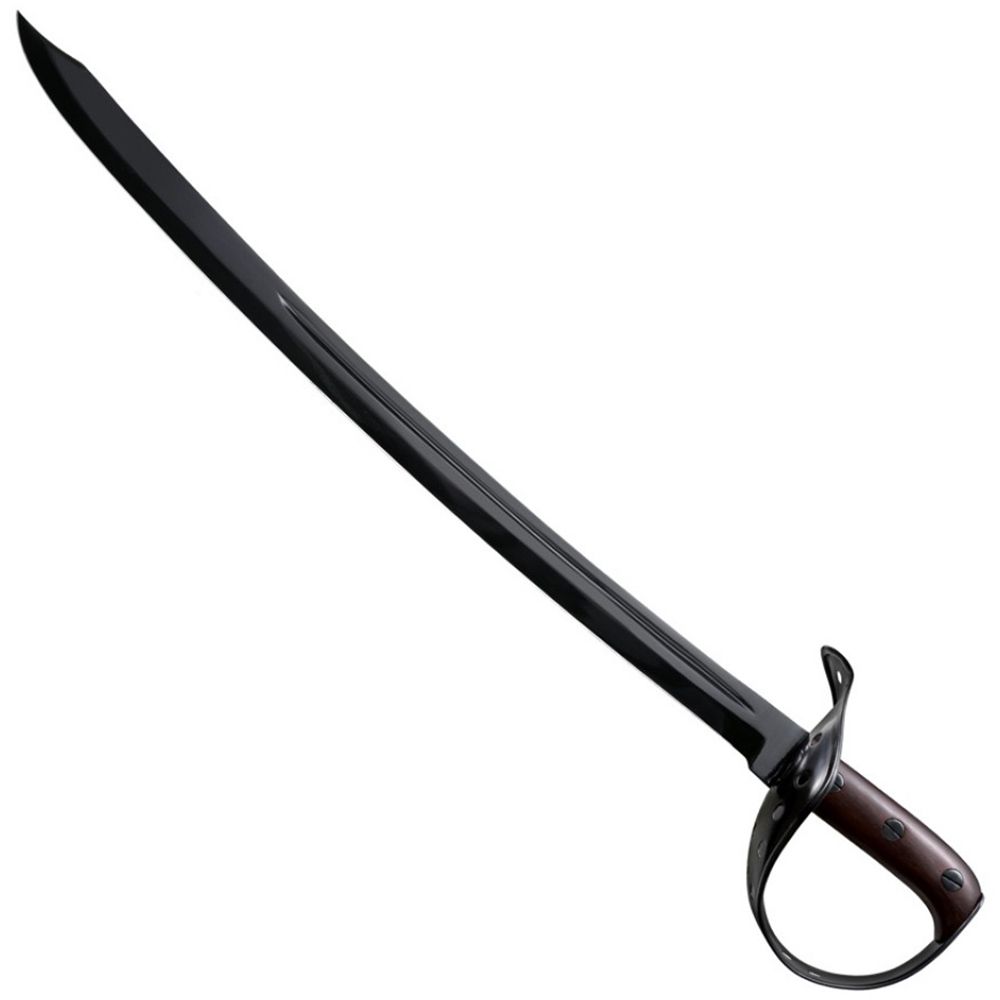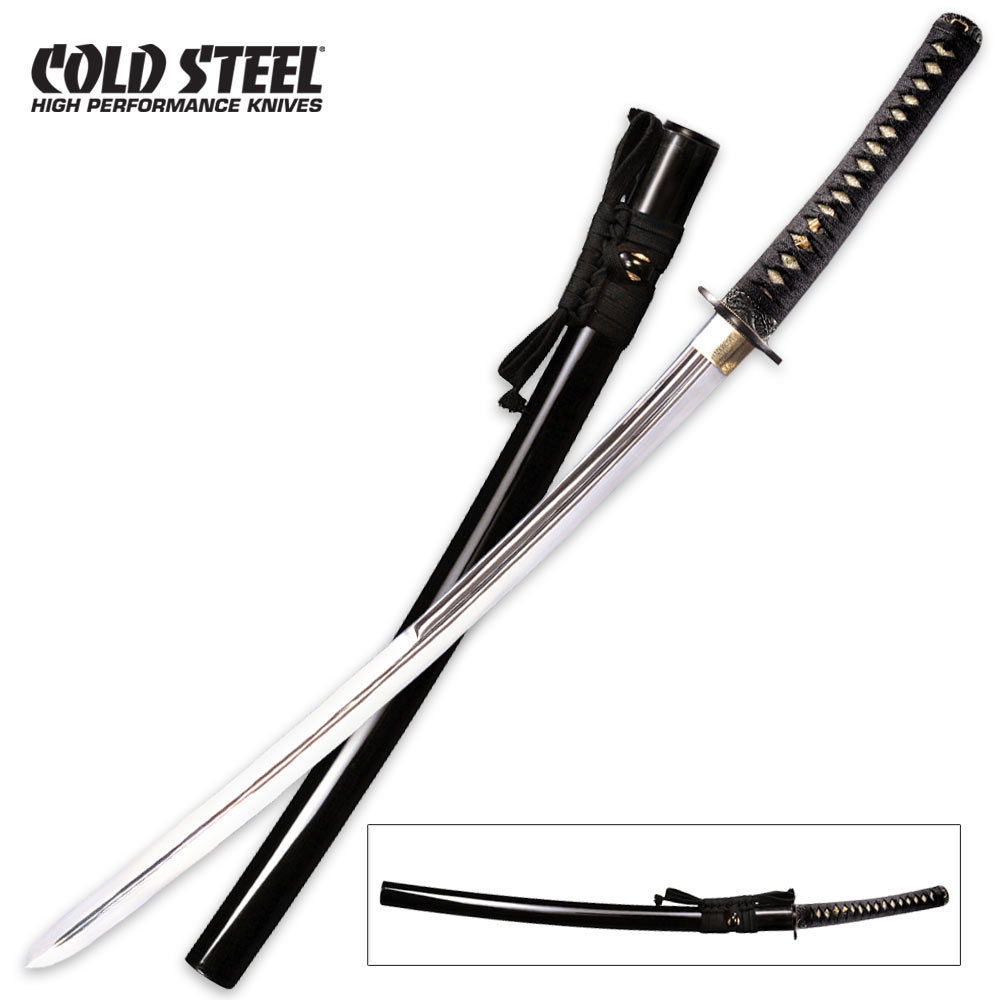
- #Are cold steel katana swords marked skin
- #Are cold steel katana swords marked full
- #Are cold steel katana swords marked code
- #Are cold steel katana swords marked series
With a real sharp katana you can cut a tatami if you master the right techniques and observe all safety precautions. For those in the know, the hataraki or liveliness of the hamon also plays a role, but this only applies to authentic nihonto. You can recognize a really high-quality functional sword by the type of steel, mounting quality, choice of materials, heat treatment and the suguta (design).

Put these kinds of swords on a stand and leave them on for the rest of your life. If a sword is not properly assembled from the correct materials and has not had a quality mount, then it is a danger to do anything with it.
#Are cold steel katana swords marked full
If a seller cannot tell you whether a sword can be disassembled, and can also disassemble it yourself, whether the blade is full tang, and made of which type of steel, then the seller really knows nothing about swords and I personally would not buy it. What I can tell you is that quite a bit of rubbish is sold as "real Japanese Sword".

No, it really takes some deepening to think about different forges or suppliers to find a sword that suits you, meets the purpose with which you want to purchase it and of course has a good price and quality ratio.

But do you immediately buy a really good sword? Does this sword do justice to the honor and respect that a real katana should deserve? You can easily buy a katana with the click of a button at the many sword webshop on the net. The idea behind this is simple: the samurai had to be able to draw his sword and mow down his enemy in one movement. Unlike most other single-edged swords, the sheath of the katana is made so that the blade of the sword points upwards. And so the sword was designed to be drawn quickly. The advantage of these weapons was a longer range and more effective at long range.ĭespite all these weapons Still they always carried a katana, for example in case their other weapons were lost or broken in battle. Many people think that the katana was the samurai's primary weapon, but they also used spears, naganita (a Japanese halberd), nodachi (a long two-handed sword), and bows. Thus, by the spiritual beliefs of the samurai at the time, the sword was regarded as an extension of his soul. The katana and the samurai became one because the sword determined whether you lived or died during a confrontation. In fact, the term samurai meant 'he who serves' and were the warrior class of Japan from the 12th century to the late 19th century. If a samurai lost his honor, he could recoup it by committing ritual suicide (seppuku). This marked the warrior's way and required loyalty, faithfulness and honor to death.
#Are cold steel katana swords marked code
The samurai lived according to the bushido, the code of honor of the samurai. Like the swords of medieval knights, the katana was a symbol of samurai power. Often a tanto or knife was also worn.Īt the top of the social hierarchy was a group of warriors: the samurai. The word katana actually means long sword and together with the wakizashi it was also called the daisho. That is also the reason that a katana is also called a samurai sword.

There is a blue cotton travel bag and an intricately decorative display bag that's made from the finest heavy silk metallic brocade.A Japanese sword or katana was used by the Samurai, the class of warriors of ancient Japan. Additionally, these swords come with two protective bags. Also, the polished blades are more strongly curved than the Imperial blades and terminate in a long "irse leaf" point for maximum cutting and slashing potential.
#Are cold steel katana swords marked skin
Most noticeable are the distinctive teal-green silk cord wrap and black ray skin used on the handles and the black iron furniture that bears the Dragonfly motif.
#Are cold steel katana swords marked series
These swords feature thicker, wider and heavier blades, which mirror the Imperial Series in respect to heat treatment, polish, quality of furnishings, and attention to detail, but with a few new departures. As skillfully designed as these swords are, they may not be perfectly suited for the twenty first century warrior, who benefited from contemporary advances in childhood nutrition and healthcare and grew up to be a substantially taller, stronger, and more athletic version of his historical counterpart.Īs a way of compensating for this size disparity, the Dragonfly Series was created. They were made for warrior's of small stature who seldom rose above five and a half feet. Most swords offered today are interpretive copies of antiquities from feudal Japan. The classic Japanese battle sword in all its incarnations has been celebrated for centuries, not only for its elegant lines and simple beauty, but also for the technique and skill that went into its construction.


 0 kommentar(er)
0 kommentar(er)
